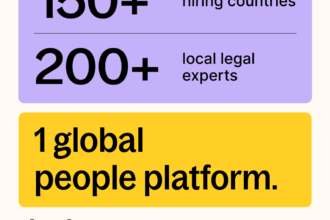Managing payroll across multiple countries is a complex task that involves handling different tax laws, compliance regulations, and currency exchanges. As businesses expand globally, technology plays a crucial role in simplifying payroll processing, compliance, and reporting.
This blog explores how modern payroll technology is transforming global workforce management and ensuring businesses stay compliant.
1. Challenges in Global Payroll Management
Before technology, companies faced major obstacles in managing global payroll:
✔ Compliance with Multiple Tax Laws – Different countries have varying payroll tax rates, reporting deadlines, and benefits.
✔ Currency & Exchange Rate Fluctuations – Paying employees in different currencies involves exchange rate risks and conversion fees.
✔ Data Security & Privacy Regulations – Countries like the EU (GDPR) and China (PIPL) impose strict employee data protection laws.
✔ Integration with HR & Finance Systems – Businesses need a seamless connection between payroll, HR, and accounting platforms.
2. How Technology is Solving Global Payroll Challenges
The adoption of AI-driven, cloud-based payroll solutions has transformed how multinational companies manage payroll.
A. Cloud-Based Payroll Platforms
✔ Provides a centralized payroll system for multiple countries.
✔ Ensures real-time access to payroll data from anywhere.
✔ Automates tax calculations, deductions, and filings.
💡 Example: Global payroll providers like Papaya Global, Deel, and ADP offer unified payroll management across 160+ countries.
B. AI & Automation in Payroll Processing
✔ AI-powered payroll platforms reduce errors and improve efficiency.
✔ Automates salary calculations, benefits administration, and compliance updates.
✔ Uses machine learning to detect payroll discrepancies and prevent fraud.
💡 Example: AI-driven payroll systems can flag potential tax miscalculations before submission, preventing penalties.
C. Blockchain for Payroll Transparency
✔ Smart contracts automate salary payments securely.
✔ Reduces intermediary costs in international transactions.
✔ Enhances transparency by maintaining tamper-proof payroll records.
💡 Example: Some companies use cryptocurrency payroll to pay remote workers in regions with limited banking infrastructure.
3. Benefits of Using Payroll Technology
✔ Compliance Assurance – Automated updates ensure alignment with tax and labor law changes.
✔ Faster Payroll Processing – Reduces manual errors and delays in salary payments.
✔ Multi-Currency Payments – Converts and processes salaries in local currencies without high banking fees.
✔ Improved Data Security – Cloud platforms use encryption and multi-factor authentication to protect payroll data.
4. The Future of Global Payroll Technology
As businesses continue expanding, the demand for automated, scalable, and AI-powered payroll solutions will grow. The future of payroll includes:
✔ Payroll Predictive Analytics – AI-powered insights to forecast payroll costs and tax liabilities.
✔ Real-Time Cross-Border Payments – Instant salary transfers without delays.
✔ Greater Integration with HR & Workforce Analytics – Payroll data will integrate with talent management, performance tracking, and workforce planning tools.
Conclusion
Technology is revolutionizing global payroll management, making it more efficient, compliant, and cost-effective. Companies that adopt cloud payroll solutions, AI automation, and blockchain security can scale their operations seamlessly while ensuring employees are paid accurately and on time.






